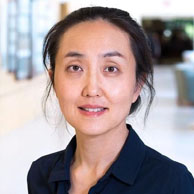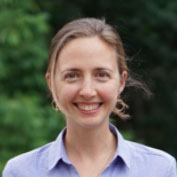Position Available
| Jody Hey, PhD |
|---|
Dr. Hey lab is currently considering applications to the Bioinformatics PhD program to work on NIH funded research developing improved methods for studying natural selection on protein coding regions. All researchers in the Hey lab employ computational and mathematical approaches to address evolutionary questions. The main areas of research in the lab are the study of natural selection, particularly in human populations, and the development of methods for estimating demographic history of populations.
| Sergei K. Pond |
|---|
The viral evolution group (PI Dr Sergei Kosakovsky Pond) has a broad research portfolio, and is open to a wide range of PhD applicants interested in genomics, evolution, method development, and learning from biological data using statistical approaches. Key research opportunities include but are not limited to.
— Develop and improve popular scientific software (HyPhy, Datamonkey, HIV-TRACE) used by tens of thousands of researchers worldwide and cited in thousands of publications.
— Create statistical and computational models and techniques to better understand fundamental issues in evolution, e.g., natural selection and functional innovation
— Study viruses: SARS-COV-2, HIV-1, Influenza A virus, and many other human, animal, and plant pathogens.
— The lab has a diverse funding stream from multiple agencies (NIH, NSF, CDC, FDA) and very wide network of national and international collaborations.
| Vincenzo Carnevale |
|---|
Dr. Carnevale’s lab has open positions for applicants to the Bioinformatics PhD program who are interested in machine-learning based modeling approaches for studying evolution and computational structural biology. The lab develops theoretical and computational approaches (including statistical (mean)field theories, Monte Carlo and molecular dynamics simulations, statistical inference of generative models, and deep learning) to glean microscopic insight into sequence-structure-function relations in proteins and investigate relevant bio-molecular processes. Research opportunities include (but are not limited to):
— Modeling molecular evolution under the effect of epistasis
— Developing generative probabilistic models for protein sequences and structures
— Developing Neural-Network based potentials for molecular simulations
— Discovering new drug candidates using AI/ML approaches
| Sudhir Kumar |
|---|
Comparative Genomics and Molecular Phylogenetics :Modern laboratories and consortia now produce datasets of vast breadth, depth, and complexity. These massive datasets are affording unprecedented understanding of basic to translational biomedicine, personal to population genomics, and global biodiversity. Yet perceptive analyses of these data await scalable and efficient computational methods that can reveal and harness the knowledge embedded in expanding databases of genetic variation and functional phenotype annotations. Our laboratory excels in integrating computational and mathematical techniques into evolutionary biology and biomedicine. We invent methods, software packages, and databases for many biological disciplines. We conduct big data studies to make discoveries in molecular evolution, genetic diseases, and tumor genomics.
Join our team if you want to invent new computational methods and develop algorithms for scalable and efficient analysis of big datasets. Highlights include statistical methods, machine learning, and computational algorithms in phylogenomics and phylomedicine. We are also interested in you if you wish to conduct fundamental research in genomic medicine and molecular evolution using large datasets. For those interested in technology development, we have opportunities for developing high-impact software and database tools. Multiple positions are available for motivated graduate students seeking Ph.D. and postdoctoral fellows seeking the next generation of training.
| Johnathan Whetstine |
|---|
The Whetstine Laboratory at the Fox Chase Cancer Center is hiring highly ambitious and self-motivated Postdoctoral Fellows in Cancer Epigenetics. The laboratory uses state-of-the-art technologies and collaborations with leading scientist and clinicians to address the following areas: (1) the identification and characterization of epigenetic mechanisms driving extrachromosomal DNA amplification and chromosomal rearrangement, therapeutic resistance and tumor heterogeneity; (2) the impact of cancer-associated epigenetic factor variants (mutations and germline) on drug responses; and (3) the direct role of chromatin factors in regulating cell division, especially DNA replication. Some example publications addressing these areas of interest are: Black et al. (2010) Mol Cell; Black et al. (2013) Cell; Van Rechem et al. (2015) Cancer Discovery; Mishra et al. (2018) Cell; Clarke et al. (2020) Cancer Discov.; van Rechem et al. (2021) Cell Reports; Gray et al. (2023) Cell.
| Hayan Lee |
|---|
The Lee Lab focuses on computational epigenetics in cancer and aging. We are interested in identifying somatic epi-mutations in early-stage cancer and molecular-level subtypes using comprehensive multi-omics data analysis. We intend to use this research to optimize clinically actional biomarkers and develop machine learning models to predict cancer typing, subtyping, matching therapeutics, and monitoring relapse. We pursue cutting-edge technologies, including single-cell spatial transcriptomics/proteomics and deep learning, to understand the cancer microenvironment. Our goal is to identify image biomarkers for early diagnostic, prognostic and therapeutic prediction in cancer and neurodegenerative diseases.
Potential projects are;
1. Spatial single-cell data animation
2. PAN-Kidney cancer methylation biomarker and prediction model development
3. Pancreatic cancer multi-omics data profiling
4. Methylation p-value design
5. Bayesian genome mappability score development
6. Allele-specific methylation study
7. Neuroendocrine tumor (NET) multi-omics profiling
You can also bring your own idea. The Lee Lab can help you develop it.
| Vince Voelz |
|---|
Projects in the Voelz lab focus on molecular simulation and statistical inference approaches to understand the conformational dynamics of biomolecules, computational drug discovery, and the design of nonbiological foldamers. Many of our NIH-funded projects rely on the production and analysis of large trajectory datasets obtained using massively parallel distributed computing. Another project focuses on further development and application of a Bayesian inference algorithm to refine conformational populations from simulations against experimental measurements.
| Neil Johnson |
|---|
DNA double-strand breaks (DSBs) represent the most toxic form of DNA damage and can arise in either physiological or pathological conditions. If left unrepaired, these DSBs can lead to genome instability which serves as a major driver to tumorigenesis and other pathologies. Consequently, localizing DSBs and understanding the dynamics of break formation and the repair process are of great interest for dissecting underlying mechanisms and in the development of targeted therapies. In this project, we will establish END-seq, a highly sensitive next-generation sequencing technique for quantitatively mapping DNA double-strand breaks (DSB) at nucleotide resolution across the genome in an unbiased manner. END-seq is based on the direct ligation of a sequencing adapter to the ends of DSBs and provides information about DNA processing (end resection) at DSBs, a critical determinant in the selection of repair pathways. The absence of cell fixation and the use of agarose for embedding cells and exonucleases for blunting the ends of DSBs are key advances that contribute to the technique's increased sensitivity and robustness over previously established methods. Overall, END-seq has provided a major technical advance for mapping DSBs and has also helped inform the biology of complex biological processes including genome organization, replication fork collapse and chromosome fragility, off-target identification of RAG recombinase and gene-editing nucleases, and DNA end resection at sites of DSBs.
| Matthew Helmus |
|---|
The Helmus lab is currently focusing on three main research areas:
1. Forecasting Risk of Paninvasive Species : Invasive species are being introduced to new regions at an ever-increasing rate, but not every invasive becomes paninvasive. Paninvasive species are those invasives that spread globally and disrupt economic markets on a global scale. Much of my team’s research is focused on forecasting the risk of the spotted lanternfly plant hopper, an invasive forest and grape pest that is quickly spreading across the U.S. and is at risk of disrupting the global wine market.
2. Island Biogeography of the Anthropocene: Humans have reshaped species distributions across the earth, mixing and homogenizing biota from distant areas. My team merges evolutionary, ecological, and island biogeographic theory with economics to explain and predict present-day biogeographic patterns. Our approach is to use mathematical models, simulations, and big data in order to synthesize across multiple systems and elucidate new patterns and update classic island biogeographic theory with human drivers of biodiversity change.
3. Quantitative Methods for Biodiversity Science: Biodiversity science often deals with large data sets that are analyzed to understand how taxonomic, phylogenetic, and functional components of biodiversity vary across spatial and temporal scales. However, for biodiversity science to have a broader impact, it must effectively communicate insights to stakeholders who own and manage landscapes. My team develops general quantitative methods for biodiversity science and develops frameworks for how ecologists can effectively communicate with stakeholders. These methods are packaged in open access R code and accessible to scientists and stakeholders through interactive online applications.
| Jocelyn Behm |
|---|
The Behm Lab researches how human activities affect biodiversity. In particular, we are open to students interested in researching how newly introduced species respond and adapt to their new environments. We are considering applicants to the Bioinformatics who are interested in the following topics related to newly introduced species:
Adaptation and gene flow in recently introduced species using genomic tools
Habitat use across human-dominated landscape using using GIS tools
Understanding human transportation and economic networks contribute to the spread of non-native species using large economic datasets
| Igor Astsaturov |
|---|
Mortality from colon and pancreatic cancers arises from cancer metastatic dissemination to the liver. In relevance to specific diet macronutrients, glycemic load from carbohydrates has been specifically linked to the risk of metastatic recurrence of stage 3 colorectal cancer. However, the mechanism of how dietary carbs contribute to the formation of liver metastases remains poorly understood. Our analyses of transcriptomes of hepatocytes from fasted or HCD-fed mice demonstrated that feeding a high carb diet (HCD) induces expression of type-I interferon-stimulated genes (ISG) and related phosphorylation of STAT1, and a more well-recognized IL-6/STAT3 inflammatory cascade. This inflammatory phenotype in hepatocytes was completely abolished if animals fed ketogenic diet or fasted. Feeding HCD was associated with markedly reduced expression of genes regulating RNA folding, splicing, processing and nuclear export. Via informatics analyzes of transcriptomes, we showed that feeding HCD is associated with abundance of alternatively spliced transcripts capable of forming double-stranded RNA (dsRNA). We hypothesized that these dsRNA are potent viral mimics triggering the innate immune responses via type I interferons. Aim 1 will determine the hepatocyte-intrinsic activators of inflammatory response in mice fed HCD using a combination of genetic and informatics approaches. Aim 2 will determine if reduced glycemic load in the diet impedes growth of liver metastases. The key experiments will compare diets with varied composition of carbs and fats (e.g., HCD vs. ketogenic) and caloric load (fasting-mimicking, intermittent fasting vs. Western-HFD, or HCD) on liver metastatic colonization using syngeneic mouse models of pancreatic and colon cancers.
| Dave Wiest |
|---|
Integrating genomics data focused on understanding specification of the gamma-delta T cell fate
| Yibin Yang |
|---|
Our lab aims to achieve a systematic and comprehensive understanding of the immune regulatory pathways and immune escape mechanisms in human lymphoid malignancies. We have established to use of multiple high-throughput screening technologies, next-generation sequencing, proteomics, and clinical samples to accomplish these goals, which will promise to provide critical insights into the molecular circuitry that drives these lymphoid cancers and, consequently, results in the development of novel therapeutic strategies for these distinct lymphoproliferative disorders. We seek Ph.D. or MS students from the Bioinformatic program to join our efforts to apply cutting-edge Bioinformatic approaches to further our understanding of the immune regulatory mechanisms in lymphoma. The individual will engage in CRISPR library screening data analysis, next-generation sequencing, gene expression (RNA-seq), and clinical evaluation of targeted and immunotherapy approach. This is a unique opportunity for someone with expertise in bioinformatics or next-generation sequencing techniques to learn complementary skills and become proficient in the translational study.
| Kerry Campbell |
|---|
I am co-director of the Immune Monitoring Facility at Fox Chase, where we process blood samples from patients on immunotherapy clinical trials to analyze their immune phenotype using flow cytometry. Flow cytometry allows us to stain immune cells in blood with antibodies tagged with distinct fluorophores. We add antibodies that bind to biomarkers to identify various immune subsets (T, B, NK, myeloid cells), as well as biomarkers of activation, proliferation, exhaustion, etc. We currently analyze up to 14 biomarkers at once, by detecting distinct fluorophores on different antibodies. This provides very comprehensive multidimensional data that needs to be processed through gating on the individual immune subsets, then quantifying the expression of markers of activation, exhaustion, proliferation, etc. in individual samples. We compare changes from pretreatment to on-treatment samples over time in individual patients and look for shared patterns, particularly those shared within the patients that either do or do not respond to the immunotherapy. Ultimately, we seek to establish whether therapy stimulated an immune response and identify biomarkers in pretreatment samples that could predict patient outcome. We need a student to process and analyze the data accumulating from an ongoing study of non-small cell lung cancer patients. Goals will be to establish automated gating strategies to accelerate data processing and use available analysis platforms (tSNE, FlowSOM, UMAP) and potentially AI platforms to better visualize and identify biologically relevant patterns within the data. The student will become well versed in human cancer immunology, flow cytometry and related data analysis, and biostatistics.
| Cihangir Duy |
|---|
Many leukemia patients initially respond to treatment, but later succumb to the disease upon emergence of drug-resistant leukemia cells. Accumulating evidence implies a key role of epigenetic mechanisms in the acquisition of drug resistance. We are passionate about understanding these epigenetic mechanisms by implementing computational approaches in combination with a variety of epi-genomic techniques and single-cell omics (e.g.; Duy et al. Cancer Discovery 2019 & 2021). One creative project determines the epigenetic evolution in individual leukemia cells by integrating cutting edge single-cell genomics, innovative clonal evolution experiments, and CRISPR editing technology. This project sets out to challenge the conventional understanding of cancer progression is response to treatment. Another project focuses on how mutations in epigenetic regulators alter the epigenome, especially enhancer function and interactions. To explore this, we analyze and integrate multi-omics data such as DNA and histone methylation profiles, 3D chromatin architecture and transcriptomic data. The overall goal is to better understand gene regulation, cancer biology, and develop new therapeutic options for patients. Specific projects will be tailored according to the interest of the candidate but will include topics such as integration of bulk and single-cell multi-omics data and machine learning approaches. Our lab offers a dynamic interdisciplinary environment and a unique ecosystem for transformative research by integrating basic, translational, and clinical research to produce knowledge, therapeutics, collaborations, and inventions.















